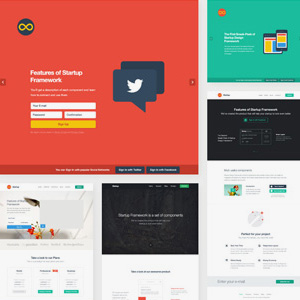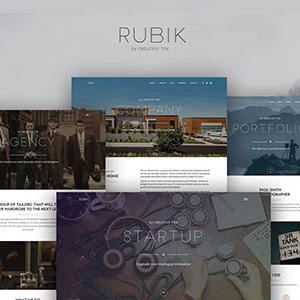They say that most start-ups fail within less than six months of their launch. After a year half of the remaining don’t exist anymore either. The rest are probably successful examples such as Instagram, Evernote, Wunderlist or Zappos.
The Lean start-up movement is not too old, but it has emerged on top of many other ideas because it is entirely based on achieving success as quickly as possible, then running on profit and, if it didn’t happen yet, get bigger. Today we take a look at what running a Lean start-up means and why I advise you to go with it if you sit on a great idea, but are not willing to risk too much in the beginning.
So what’s Lean?
This method is based on experimentation and finding out what it works well instead of elaborate, expensive planning. Let’s face it, having a good app idea means nothing if the only one who likes the idea is you. What many start-ups have been doing for a long time is based on intuition. As much as we would love to, we are not all very sharp at this.
The traditional huge planning before the release has been replaced by modern terms such as “minimum viable product” and “pivoting” and these are concepts that make a whole lot of a difference in the business world today.
Lean works because it looks to eliminate wasteful practices and increase the value of the working ones so that start-ups have better chances of reaching running on profit. Lean start-ups don’t require huge funding form outside, elaborate and expensive business plans and neither a perfect product. It’s important to use a good business phone service in your business, to avoid the spent and lose of future customers.
It might sound weird, but you don’t need a perfect product. What you need is a good idea, as customers are always going to be there to give you feedback and guide you the right way. Moreover, the customer feedback is essential during the development phase of the product and it makes sure you don’t spend huge amounts of resources on features people don’t need.
So how does it work?
Lean is based on metrics and key performance indicators and a continuous development process, called iteration. The reasoning behind this is that start-ups do not have money in the beginning and can’t afford massive product launches. This is when the concept of minimum viable product (MVP) comes in.
The MVP is, according to the movement’s pioneer Eric Ries, the “version of a new product which allows a team to collect the maximum amount of validated learning about customers with the least effort.” The role of the MVP is to test business hypotheses (or assumptions) about the product and to allow the start-up to learn about its customers.
In any start-up, the learning process is extremely important because it is going to be the way your product will get better. Customers are always willing to give feedback if you ask for it. You need to start learning as quickly as possible.
After launching the MVP, a Lean start-up should continuously develop the product, send it to the real world and, again, work with metrics and see how successful it is. Developing a new feature is not always an option when there are no money available, so developing a small teaser and seeing if customers would be interested is a good way of testing this. If there is demand, then it is worth spending resources on developing the actual feature. If not, then forget about it.
Another key tool of a Lean start-up is A/B testing. The goal of doing this is to observe what impact small changes might have on your product. Start-ups need to convert and it’s often small changes (such as button placement or color change) that will increase the conversion rates by some few, but noticeable percentage. Any single customer counts when you don’t run on profit yet, and even if you do, more money never hurt anybody.
Amazon did something many years ago that many consider to be one of the most interesting concepts on Lean start-ups. Everybody knows they started with selling books only. They didn’t expand until they were running on huge profit. When they already were impressively successful, they expanded into what we know Amazon is today. They literarily sell everything that you could think of.
Now imagine how much money they would’ve had to spend to build today’s Amazon right at the beginning. Moreover, would they have been successful right away? Probably not. Most likely not. Amazon would have been a failure, and an expensive one too.
The Lean start-up movement tells a similar story to their adopters. Start small and build on the success you already have. Starting big is too risky and is the reason why most start-ups fail.
Start always by validating your hypothesis and build the MVP. Once that is in place and you start bringing in the money invested, go bigger. Start testing hypotheses for other features. See if customers would be using them and develop only after you get a confirmation of their interest.
How to build the MVP though?
Now this is where it gets interesting. Building the MVP is actually a longer process than it might seem. Only because the MVP should be small, it doesn’t mean it should be crappy. The MVP has to be good, because it needs to get users interested.
Initially, Facebook was only available for Harvard students. It was a good idea, it got people joining, even if other sites as Myspace were much popular back then. Then Facebook built on their small initial success. We all know how big they are today.
Your MVP should go through prototyping, iteration and intense A/B testing. When the product is out, you need to be certain people will have no issues using it. As I’ve said before, users will always choose a simple product with high usability over an amazing product that is difficult and not intuitive to use. Usability testing is your best friend during the initial development cycle.
You can’t make sure that your MVP is a product everybody will love. If it would be that easy, everybody would be a billionaire by now. But you can at least increase your chances by launching a product that is easy to use and doesn’t require too much effort from the user. Now they are more likely to play with it. Once they do, you should have plenty of data to study and improve upon. This is a linked process and requires your permanent attention and interest for a long period of time – or at least until you can afford hiring the right people to do your job.
Having a start-up is not easy and running Lean doesn’t make it easier either. You will still have to spend countless of sleepless nights, concern about money and lack of success in the beginning and you will still have to deal with the uncertainty of owning a start-up. What Lean does, though, is that it makes the process less painful, shorter and definitely less risky. This is what many entrepreneurs have been lacking before the movement emerged.
But now with Lean being here, you can definitely give it a try. It is not the receipt of success. There are plenty of failed Lean start-ups out there as well. There are plenty entrepreneurs who wished never to have heard of Lean. But if you look around at some successful start-ups (or even big companies like Amazon and Facebook), they all started up small and built on their initial success.
This is what Lean is all about. With a bit of inspiration from you and good business practice, you should at least have higher chances than most of the rest. And if, for whatever reason, your idea was poor and the company is a failure, at least the losses were minimized by running Lean. And when discussing start-ups, money (or thereof the lack of it) is always a key subject. If you go with Lean and do it the right way, you at least make sure the risk is lower. I assume this should be enough for entrepreneurs to jump onto Lean’s bandwagon… have you already?






 Top 10 Countries to Start Your Web Development Business
Top 10 Countries to Start Your Web Development Business  20 Frameworks to Build Awesome Websites
20 Frameworks to Build Awesome Websites  [Review + Giveaway] Rubik Presentation Page and Why You Need It – 10 Developer Licenses for Free
[Review + Giveaway] Rubik Presentation Page and Why You Need It – 10 Developer Licenses for Free  Build a Great WordPress Site With Drag-and-Drop Theme
Build a Great WordPress Site With Drag-and-Drop Theme